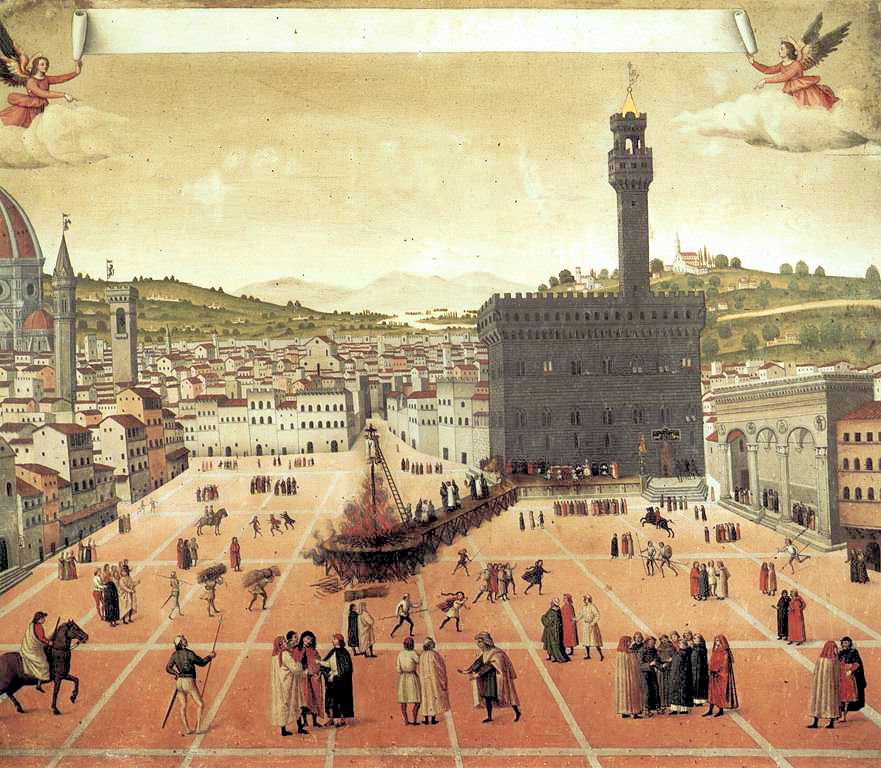 A narrative experiment like Tristram Shandy and Finnegans Wake, it invents a new language remote from the author’s and the reader’s speech, at times a kind of translation from Italian. The novelist who always heard her people speaking had to record inaudible voices.
A narrative experiment like Tristram Shandy and Finnegans Wake, it invents a new language remote from the author’s and the reader’s speech, at times a kind of translation from Italian. The novelist who always heard her people speaking had to record inaudible voices.
Romola involved strenuous scholarly research, into language, place, and the manners, culture, politics, and religion of late fifteenth-century Florence, with historical characters, like Savonarola, the Medici family, Machiavelli, and the painter Piero di Cosimo, re-imagined and related to imaginary people – Romola, Tito, Tessa, Bardo, Baldassare. Romola exhausted its writer, who said she began it as a young woman and finished as an old one: it is the middle age of George Eliot.
The novel is a turning-point in the artist’s career, strikingly different from the earlierScenes of Clerical Life, Adam Bede and The Mill on the Floss, the stories reviving her youth and the Midlands, from which she was finally cut off – except in imaginative memory. The change is dramatically marked by the rural working-class Silas Marner, which forced its way into Eliot’s oeuvre, interrupting the composition of Romola. The fiction after Romola returns to England, though in them foreignness is always crucial – Italy in Middlemarch and the German and Italian scenes of Daniel Deronda.
Romola divides its readers and critics: some reject it; some admire it but judge it flawed; Browning, Tennyson, Gladstone, the great Victorian critic W.H.Hutton, even Henry James, and some modern critics, have thought it her finest work.
For more information and registration.
Date and time: 23 November 2013, 09:30 – 18:00
Venue:
Senate House,
Malet Street,
London, WC1E 7HU
Keep up to date with all the events at SAS
